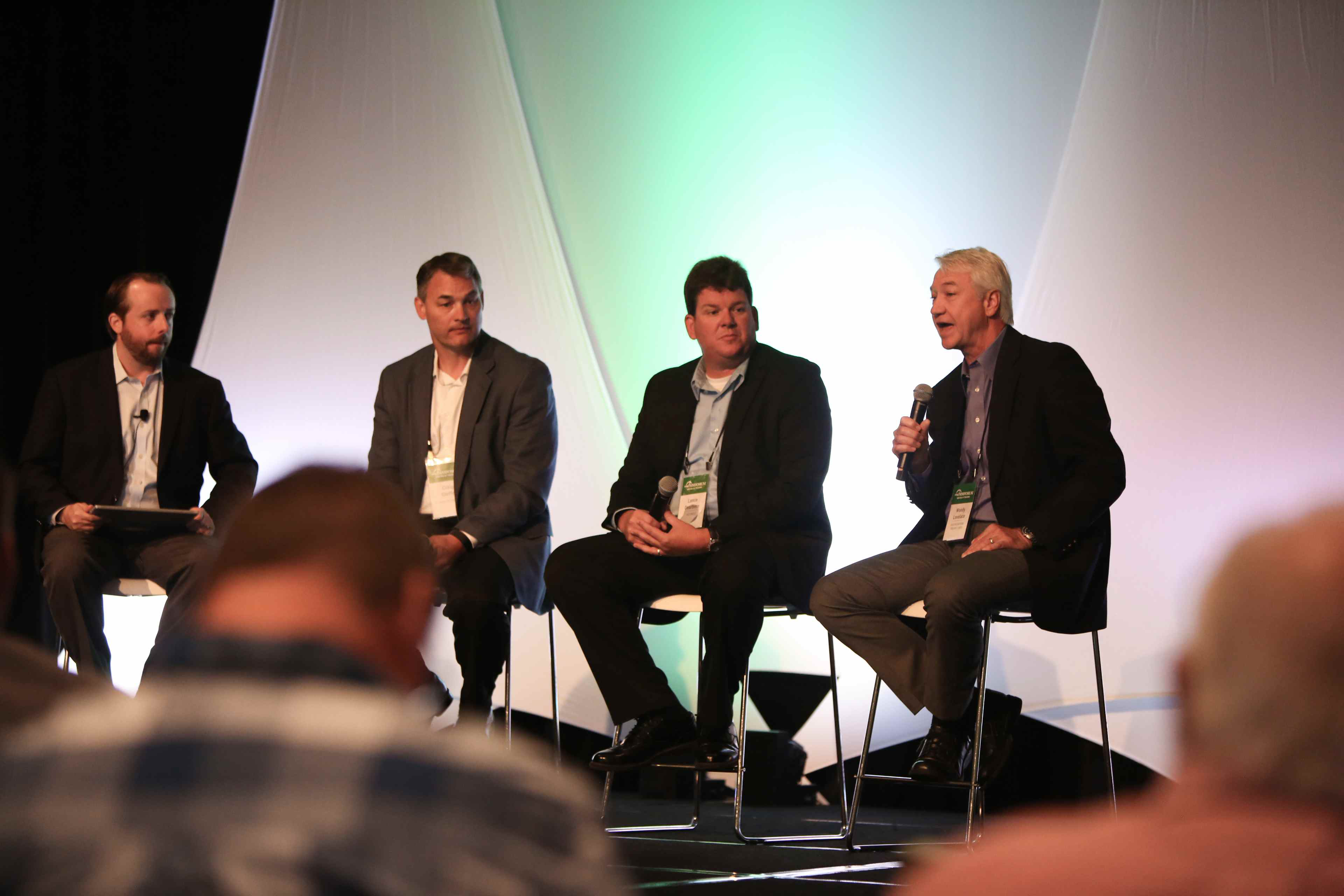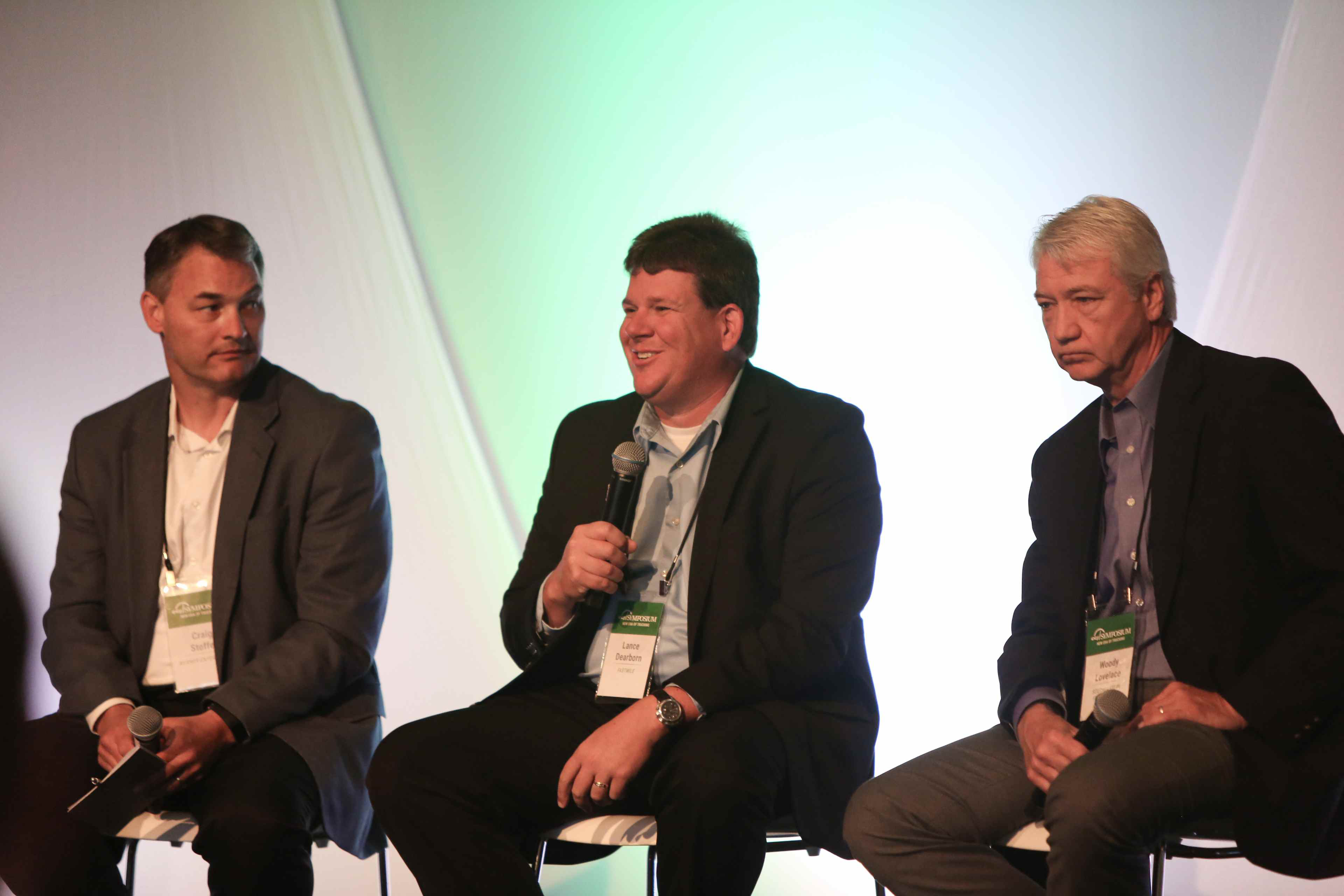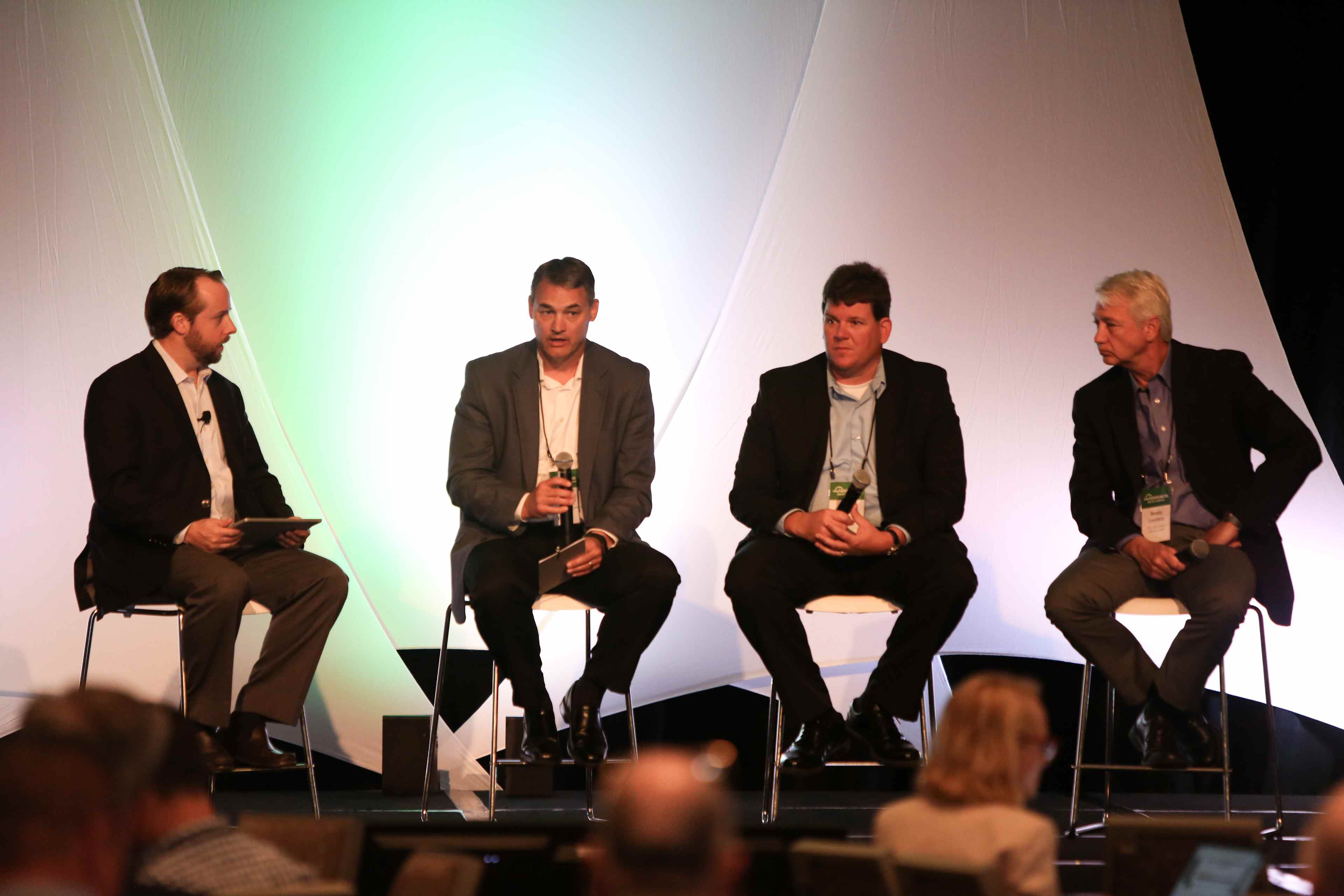 Tim Denoyer (far left) with ACT Research moderated the e-commerce panel with Craig Stoffel (Werner), Lance Dearborn (FASTMILE Logistics) and Woody Lovelace (Southeastern Freight Lines).
Tim Denoyer (far left) with ACT Research moderated the e-commerce panel with Craig Stoffel (Werner), Lance Dearborn (FASTMILE Logistics) and Woody Lovelace (Southeastern Freight Lines).
FedEx, UPS and the Postal Service have the e-commerce market covered for parcel-size shipments, but an opportunity still abounds.
A growing number of carriers and logistics companies are moving larger items purchased through online B2B and B2C channels to curbsides and through the front door.
Recently, a panel of fleet executives discussed critical success factors in final-mile transportation and logistics at the annual CCJ Spring Symposium in Hilton Head, S.C.
Meeting expectations
Parcel carriers drop shipments on doorsteps but Orlando, Fla.-based FASTMILE Logistics delivers bulky household items like furniture and appliances across the threshold and into homes.
“Anytime you are walking into a customer’s home it changes everything,” said Lance Dearborn, chief executive of FASTMILE Logistics, a regional carrier and logistics provider that specializes in e-commerce and last-mile residential deliveries. “When you take that extra step inside the home, the expectations of delivery go through the roof.”
To meet those expectations, drivers for FASTMILE Logistics are carefully selected and trained for “soft skills,” Dearborn explains during last Tuesday’s panel.
Companies in the final-mile segment also have to step up to meet expectations for delivery information. Shipment orders come with “a lot more details” compared to orders in a truckload or less-than-truckload environment, said Craig Stoffel, vice president of global logistics at Werner Enterprises.
Orders may require a transportation provider to send text notifications to the consumer to update shipment status, for example.
As one of the largest truckload carriers, Werner provides retail customers with final-mile services using a national network of partner carriers. Each carrier has different technology capabilities.
“We had to come up with a common platform,” he said. “We developed some proprietary technology that allows for our internal customers and delivery crews to be on the same page.”
 Werner has an app that partner carriers use to capture signatures and scan shipment barcodes. Werner’s technology platform can also integrate with carrier IT systems to transmit and capture shipment information automatically, he said. Having seamless connectivity and visibility is essential to meet the service expectations of online consumers.
Werner has an app that partner carriers use to capture signatures and scan shipment barcodes. Werner’s technology platform can also integrate with carrier IT systems to transmit and capture shipment information automatically, he said. Having seamless connectivity and visibility is essential to meet the service expectations of online consumers.
“Are you making (the customer’s) brand and image better because of your technology?” he asked.
Lance Dearborn said online buyers are tech savvy and expect to know where their order is at every point in the process. Because information is as important as the freight itself, FASTMILE Logistics scans packages multiple times as they move through its distribution and fulfillment centers in the southeast.
About 20,000 packages move through its largest warehouse facility in Orlando every day, he said. While technology makes it possible to update the location and status of shipments automatically, Dearborn stressed the importance of personalized service, especially when shipments do not go according to plan.
“We rely on technology, but sometimes we forget to pick up the phone and call the customer. If you create a personal connection, they are less likely to vent online. That phone call means a lot and it’s something we don’t do enough of,” he said.
Controlling growth
While opportunities in e-commerce abound, some carriers are taking a measured approach.
Southeastern Freight Lines, a Columbia, S.C.-based less-than-truckload carrier, has 3.5 percent its shipments (about 1,200 per day) in the final-mile space, says Woody Lovelace, vice president of business development and corporate planning.
“We could grow it a lot more than 3.5 percent,” he said, “but we are controlling that business quite a bit.”
The company has thousands of 53 and 45-foot trailers and tractors. To handle residential deliveries, the company has invested in 200 straight trucks with a 20-foot box. The trucks are domiciled at its service centers across its 13-state coverage area.
The straight trucks “allow us to build some workload for that private residence freight that we know is going to have challenges,” he said.
SEFL created an appointment management system to help automate the scheduling of residential deliveries. The system could be more automated if its shipper customers provided more delivery information in advance, Lovelace said.
“Sometimes we are lucky to get a phone number,” he said. “We could build a lot more technology to enhance the experience if we could get more information from the retailer.”
Adapting to change
All of the panelists agreed that competition is increasing in the final-mile space and worried about pricing pressures as retailers offer “free shipping” on orders.
 “Retailers have to put pressure downstream,” Stoffel said.
“Retailers have to put pressure downstream,” Stoffel said.
To be successful in ecommerce, Stoffel said transportation and logistics providers must also have effective middle-mile solutions to consolidate shipments into cost-saving truckload and LTL movements to local fulfillment centers.
Even if truckload or LTL carriers are not directly involved in final-mile fulfillment, ecommerce will continue shaping market trends, said Tim Denoyer, vice president and senior analyst at ACT Research, who moderated the panel.
Nine percent of retail sales are made online today, and Denoyer noted a “secular shift” to shorter length of hauls to accommodate faster delivery times. The average distance for truckload shipments has dropped and currently stands at just over 400 miles, he said.
“At the end of day, that is a good thing for the trucking industry. The quality of miles is going up and the time-definite nature of ecommerce is raising the bar.”
This article was written by Aaron Huff, senior editor of Commercial Carrier Journal, a partner publication of Hard Working Trucks.
![170080RAM_SF_1500_2500_PackShot_RGB[5]](https://img.hardworkingtrucks.com/files/base/randallreilly/all/image/2017/09/hwt.170080RAM_SF_1500_2500_PackShot_RGB5.png?auto=format%2Ccompress&fit=crop&h=167&q=70&w=250)







